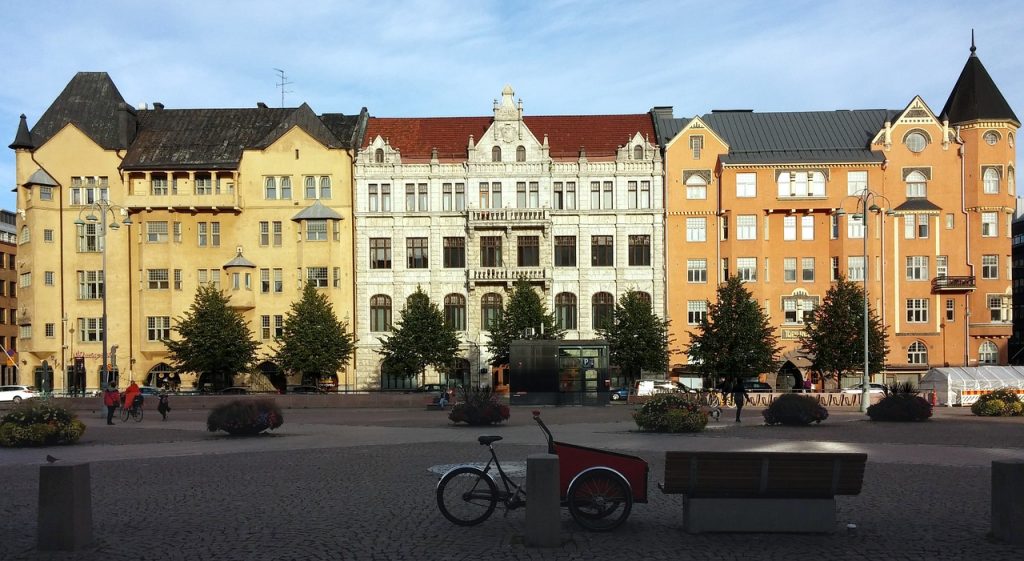If you can afford to pay an average annual cost of about £20,000 to study in Europe, then you should count yourself lucky. If you can’t afford such cost, but you’re able to nail a scholarship somehow, you should count yourself lucky as well. But if it’s always been your desire to study in Europe but you don’t have the money or a scholarship, what do you do then? Give up?
No! Never give up! You can still live your dreams of studying in Europe. The thing is, you may not get to go to Oxford or Cambridge. You’ll have to go to other cheaper but prestigious universities in Europe. So, here is a list of top 12 cheapest countries in Europe where you can get a reputable university degree.
Norway

Generally, the living cost in Norway is high, but students are at an advantage. First, you may want to know that most of the public universities in Norway do not charge international student tuition fees. If you’re charged tuition fee as a foreign student of a public university (probably as a result of the course you want to study), it’ll be a teeny tiny bit.
Second, the cost of living for students in Norway can be drastically reduced as a result of a mandatory tax called the student union fee. Benefits of paying this tax include taking school exams, discount on public transport, museums, etc.
Netherlands

The Netherlands is another European university that offers one of the cheapest tuition fees you can think of. Unlike Norway, tuition is not free for international students, they’ll have to pay a certain amount of money every academic year. But not as much as is obtainable in most developed European countries.
Although the cost of studying in the Netherlands is really cheap, they give preference to students who are from EU/EEA or Suriname.
Spain

Spain is very famous as a travel destination to many tourists from all over the world. But in addition to that, it is also a very popular choice for students who wish to study in Europe. Each year, the Spanish government sets the course fees of the public universities to the lowest level possible.
The private universities in Spain also try to conform to the rules of the government. They may not be so affordable, but they are not as outrageous as many private universities of the same standard.
Luxembourg

OK, this is one very tiny city. Only about half a million people; but do not be deceived by the number. Luxembourg has one of the highest ambition for education; both nationally and internationally.
In addition to that, most universities in Luxembourg offer halls of residence at a more cheaper rate compared to the cost of residence at other places.
Belgium

There are 3 geographical parts of Belgium, and they offer cheap tuition fee to students. However, you may want to make enquiries as it pertains your interest to see if’ it’ll be an affordable shot for you. This is because they give EU students more preference than other foreign students.
Austria

Here is an interesting one. EU students in any public university in Austria is only expected to pay €18 per semester, while non-EU foreign students pay €726.72 per semester! That’s a huge difference, but quite affordable compared to paying a tuition fee of about €20,000.
Sweden

Sweden is a member of the European Union, so any EU/EEA or Switzerland student pays the same as the Sweden nationals. Exchange students, on the other hand, pay for their tuition according to agreements between Swedish and foreign universities.
Finland

Universities in Finland offer cheap education to international students that are not from the EU. the cost of studying in Finland starts from $8,000 per annum; which is understandably on the high side for a lot of people (and don’t forget the extra cost of living). However, you can study in Finland for free as an international student who is not a citizen of EU. EEA, or Switzerland. There are certain conditions attached to that though.
For instance, if you choose to study in Finnish or Swedish as opposed to English, you’ll be exempted from tuition charges.
Germany

So, in 2014, the German government “abolished” tuition charges for undergraduates. And no, this is not only meant for the German citizens or students from a particular group of the country. This applies to both national and international students. All you have to care about is your cost of living.
Talking about the cost of living for students in Germany, it is estimated to be about $300 per month. That is less than $4000 per year.
Italy

You can study abroad in Italy on a budget and you’ll be just fine. Note that tuition depends on the institution and what course you choose to study. Master’s degree programs are generally more expensive than undergraduate degree programs.
As for the living cost, it’s a bit on the high side. Get ready to spend at least 700 EUR per month.
Hungary

Here is another one of the cheapest cities to study in Europe. Tuition fees in Hungarian universities are based on the school in question and the course of study. Courses like medicine and dentistry are some of the most expensive, costing about €20,000 per year. And that’s excluding the loving cost.
Mostly, for the not so expensive courses, tuition fee can be anything from €3000 or more. The cost of living is about €450 to €500 per month.
Ukraine

In the recent years, many international students made their ways to Ukraine to study one course or another. And this has been on the increase every year since then. One of the reasons for this is the cheap cost of studying in Ukraine universities. The tuition fee starts at $1750 to about $5000 per year.
Studying Abroad can be very expensive, but there are still many places in the Europe which are extremely affordable. We hope our list of the cheapest countries to Study in Europe will help you in making a decision. Studying in Europe? Share your experience with us as regards the expenses and tuition fees.







